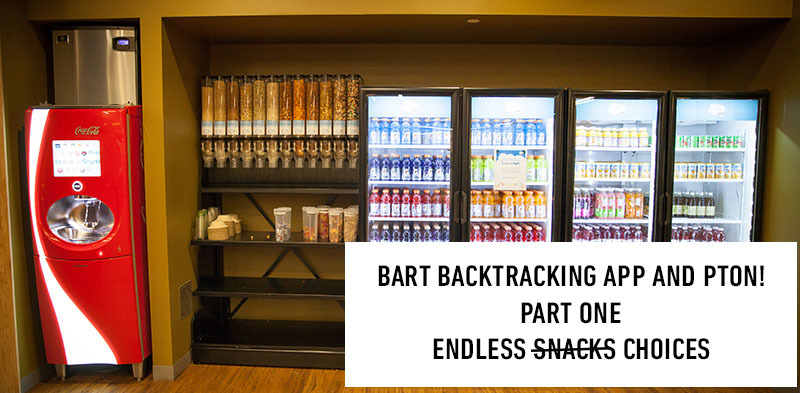
In part 1, Nadeem Aboobaker talks about how the BART Backtracker mobile web app (www.bartbacktracker.com) came to be. In the much-anticipated part 2, he talks about how he created the app.
Introduction to PTOn!
You may think that the best thing about working at Salesforce is the perks – endless snacks, concerts, onsite fitness center, and did I mention endless snacks?
But really, the best thing about working at Salesforce is the culture. The work is challenging and rewarding, people feel comfortable sharing ideas and opinions, and folks are empowered to work on things they want to work on.
Most importantly, they’re given a chance to learn new things!
One of the programs for learning new things is called Paid Time On! (PTOn!). Similar to Paid Time Off (PTO), we accrue PTOn time that can be used to learn new technologies and skills. PTOn can be used for anything that benefits your career, even if it’s outside the objectives of your team. You can choose to implement a missing feature in Salesforce, work on a side project, investigate a new technology, or even read a technical book.
My PTOn! Goals
As a software engineer, I wanted to work on a PTOn project that would beef up my coding skills. When I asked my wife for ideas, she immediately drew up elaborate plans for me to turn her food blog into an awesome web app, with all the fancy Javascript, CSS, and HTML5 bells and whistles. Surprisingly, she wasn’t thrilled when I turned down her food blog empire plans and told her that her idea inspired my PTOn goals.
With her idea as inspiration, I decided to make an awesome web app that was both useful and easy to use. I hoped to learn more about Javascript and CSS fundamentals, without the use of frameworks or libraries.
Sounds simple, right?
It turns out that it’s easy to learn a new technology, but much harder to come up with a great idea. It took me over a year to come up with an app idea, but only a few weeks to implement it!
Enter BART Backtracker
Working in downtown San Francisco and living in the East Bay means I commute on BART, along with 400,000 of my closest friends. And I mean closest! The trains are so packed during the evening commute that it’s often impossible to get on an East Bay train at the Embarcadero station (the last San Francisco stop before heading to the East Bay).
So how do people cope?
 SFGate wrote an article all about it. Similar to salmon swimming upstream to get home, many BART commuters go against the flow and jump on a train in the opposite direction. Their goal is to transfer at a station further west, then turn around and catch their homeward bound train before it’s packed with people.
SFGate wrote an article all about it. Similar to salmon swimming upstream to get home, many BART commuters go against the flow and jump on a train in the opposite direction. Their goal is to transfer at a station further west, then turn around and catch their homeward bound train before it’s packed with people.
Figuring out which station to transfer at without missing the homeward bound train is a difficult process: you either memorize the schedules or use a variety of BART apps that show current departure times for each station and then mentally calculate where to transfer.
When chatting with other backtracking colleagues, we jokingly suggested that there should be a mobile app for backtracking that could be used when standing on the train platform. I realized the app was possible, since BART provides a rich API that includes real time departure information for each train at each station.
I decided to build an app that took care of the schedules and calculations and simply present the backtracking train and transfer station options.
Eureka!
The idea for BART Backtracker was born. It was something I could implement as a web app using Javascript and CSS, that had the potential to be useful every day, and would hopefully be awesome and easy to use.